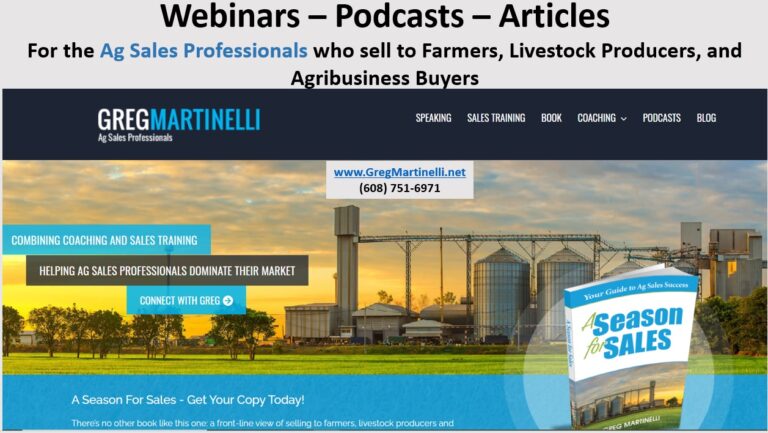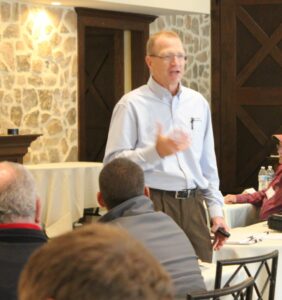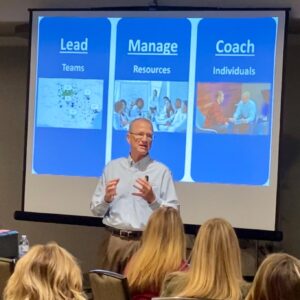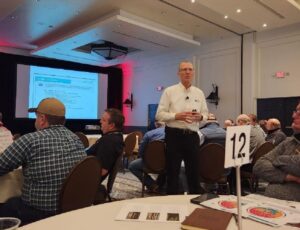It’s bumper to bumper until someone makes a mistake
Or someone helps the car in front make a mistake
As I watched the final laps of Saturday night’s NASCAR race in Daytona, with multiple crashes at the end, I couldn’t help think how similar this was to selling feed, seed, and tractors to farmers. Didn’t you? It’s an easy comparison once you think about it. First, NASCAR is a super competitive sport as is selling your products. There were about 30 cars left by the closing laps and the top 15 cars were all in a good spot to potentially win. Count how many seed companies are selling in your market. I’ll wager it’s more than 10. Which one is going to get the sale? Which one will stand out at the last second and capture the producer’s interest? The answer to that is similar to watching the closing laps of the race.
All 30 cars that were left at the end had a great car to start the race, great pit crews to make fast pit stops and great spotters to help direct them on the track. While training and consulting with agribusiness companies, I see the same thing. They all have great products. They all have great research teams that are researching the same public technical information. They are all attending the same trade shows. Most have competent marketing teams that provide professional material to reach the target market.
The question of who is going to win the race is why we watch. It’s what makes the last 10 laps so exciting. At 200 mph, in a 30-car traffic jam, it will come down to several actions in those final laps to see who will win. While you are typically not risking your life at high speed when you sell, you are risking your livelihood. In agribusiness selling, it takes an equal amount of long term focus as the drivers have. With your competition breathing down your neck, your moves in the final laps before your customer makes a decision, will make the difference as to who he buys from.
So, how does a salesperson stay competitive and keep their head in the game? I thought about that as I watched the drivers close in on the last of 160 laps. They were nose to tail, at over 200 mph, with a car on one side and the concrete wall on the other. With any one of them in a good position to win the race, it took focus, persistence and the willingness to risk it when it’s just the right time to make the pass for the checkered flag.
What actions determine who wins your race and gets the sale?
- A good support team: First and foremost, without a good pit crew and spotter, a driver is at a big disadvantage. Same goes for you. If you aren’t using all your companies’ resources to the best of your abilities, you are putting yourself at a big disadvantage to your competitor who does.
- Draft: You can try and win it alone, but why? Cars go faster and use less fuel when they draft off each other. Very few drivers win a NASCAR race without doing a great job the entire race of drafting and pairing up to go faster. Look around your territory and trade area. Who could you team up with to better serve your customer? Which suppliers of complementary products does your customer really like to buy from? Obviously, as a salesperson, you can’t team up with your direct competitor. However, there are plenty of other vendors calling on farmers. If you sell feed, there are a multitude of supplement companies. If you sell agronomy, there are a multitude of specialty companies. Talk with your management team and expand your thought process on who could be an ally in the race to capture market share.
- Risk: At some point, the winning car will have to separate from the pack and take a risk. Sometimes it pays off and sometimes not. Every 30-35 laps, the cars need to come in for a pit stop to refuel and get new tires. Staying on the track and trying to pit under a yellow is risky but could pay off with a win. Towards the end of the race, as the cars are all racing bumper to bumper in one or two rows, a car will take a risk and go three-wide to make a move for the lead. Getting out of the draft of the line up is risky. If someone goes with that car, they could pull away from the pack and win. If not, that lone car could drop to the back of the pack. Same goes for you. To differentiate yourself in a highly competitive market, you need to take some risks: Launch a new product that might not be a sure thing, call on a new market segment you haven’t called on before, lead the thought process around a technical aspect of your business, kill a slow-moving product line to make room for a better one. All of these come with a certain level of risk. With that risk comes the potential to differentiate and win the customer’s business.
- Get a run on them: Watching as the lead car sits up front like a sitting duck is the thrill of those last laps. Soon, several cars will team up to make a run on the leader. They will separate themselves and gain momentum as they take a different line on the track. The car in front is desperately watching his rear-view mirror to detect the run coming at him and figure a way to block it. So it goes in your territory. When you go after your competition’s business, you need to pick up the pace, make a run on them and get the sale before they have time to react. Otherwise, just like the lead driver, your competition will see it coming and block it. Don’t give them the opportunity.
- Measure: “What gets measured gets done.” NASCAR teams measure everything. They measure the engine functions- MPH, RPM’s, temp, etc. They measure car functions- downforce, tire conditions, etc. The reason is to determine what helps and what hinders their performance. They are constantly striving for that one advantage over their competition. They are constantly making adjustments as the race goes along. And so it should go for you. Which products are selling better than others and which are generating more revenue than others? Which customers are buying more and which are generating more revenue than others?
- Bumper to bumper until someone makes a mistake or you help them make a mistake: The last topic includes some challenging or controversial areas. First, if the above strategies don’t give you a competitive advantage and you are on equal footing with your competition, you have to stay focused and stay in line until the car in front of you makes a mistake. They may have an engine failure or go too high on the track, giving the car in second place a chance to take the lead. This happens in sales all the time. A prospect is happy with their current supplier. While you don’t give up, you stay in second place until their current supplier makes a mistake. It might be manufacturing issues, pricing issues, delivery issues, salesperson issues. Every agribusiness can and most likely will make mistakes. That’s when you have a chance for the lead. Just as a driver in second place stays on the lead car’s bumper, you have to remain vigilant for these opportunities.
The controversial part occurs when a driver in second place gets impatient and helps the leader make a mistake. Dale Earnhardt was famous for a move called the “bump and run.” He would bump the lead car in the left rear quarter panel to move them up the track and out of his way. It’s obviously not completely fair nor completely legal in the rules. However, it happens all the time in NASCAR and in business. Causing one of these is a risky gamble. They can cause crashes in a race and negative public relations in business. When one of my major competitors was going through bankruptcy, I made a strong run on their key accounts in my market. I learned the hard way that their customers thought it was a cheap shot to take at my competitor while they were down.
With that lesson learned, I approached future situations a little more delicately. In later years, my competitor went through some very difficult customer service issues: order entry, delivery problems, etc. I didn’t come at those issues head-on. I approached them through more open-ended questions that got the problems on the table for discussion. It was an opportunity for me to make my move on the car in front of me. I wasn’t going to pass it up as these opportunities don’t come along every day.
With these six actions steps, you’re prepared for the race to capture market share. In a highly competitive market like Ag, it can be difficult to differentiate. All of us have good cars (products). All of us are experienced drivers (salespeople), all of us have good pit crews and spotters (operations, accounting, marketing departments). Sometimes you have to get in the lineup and draft until you find that one opening, that one mistake that the lead car (your competitor) makes and then make a run on him for the lead.




